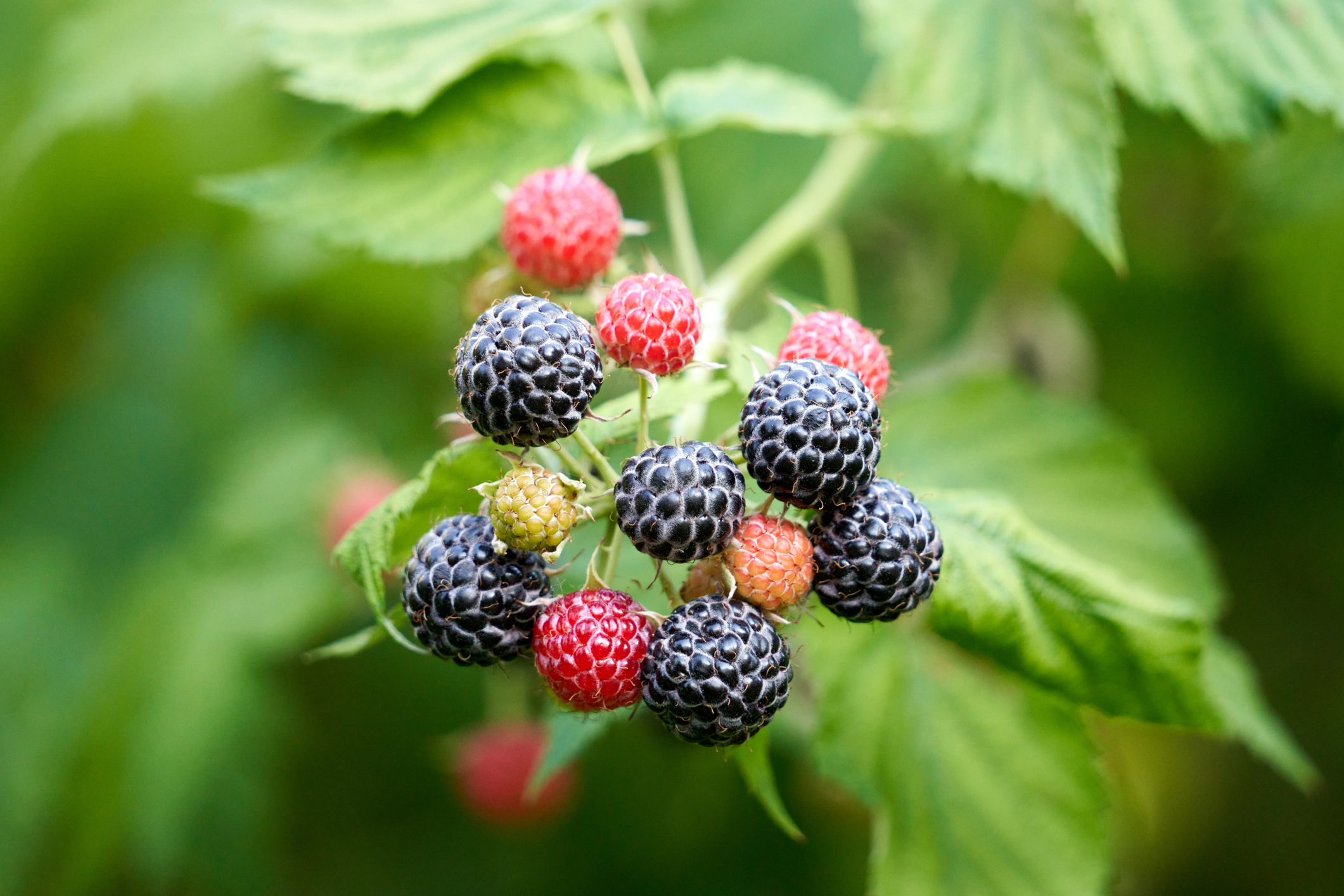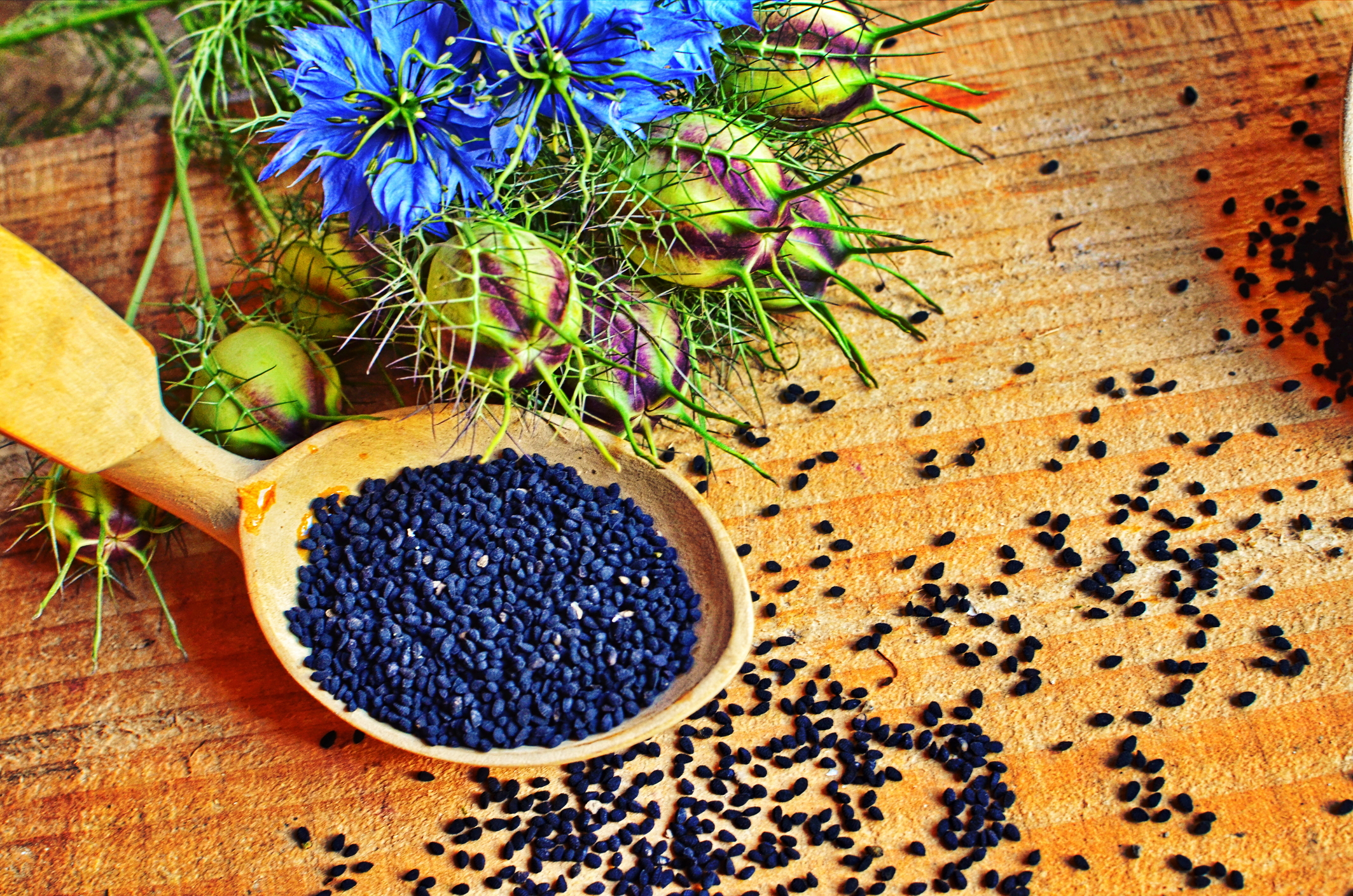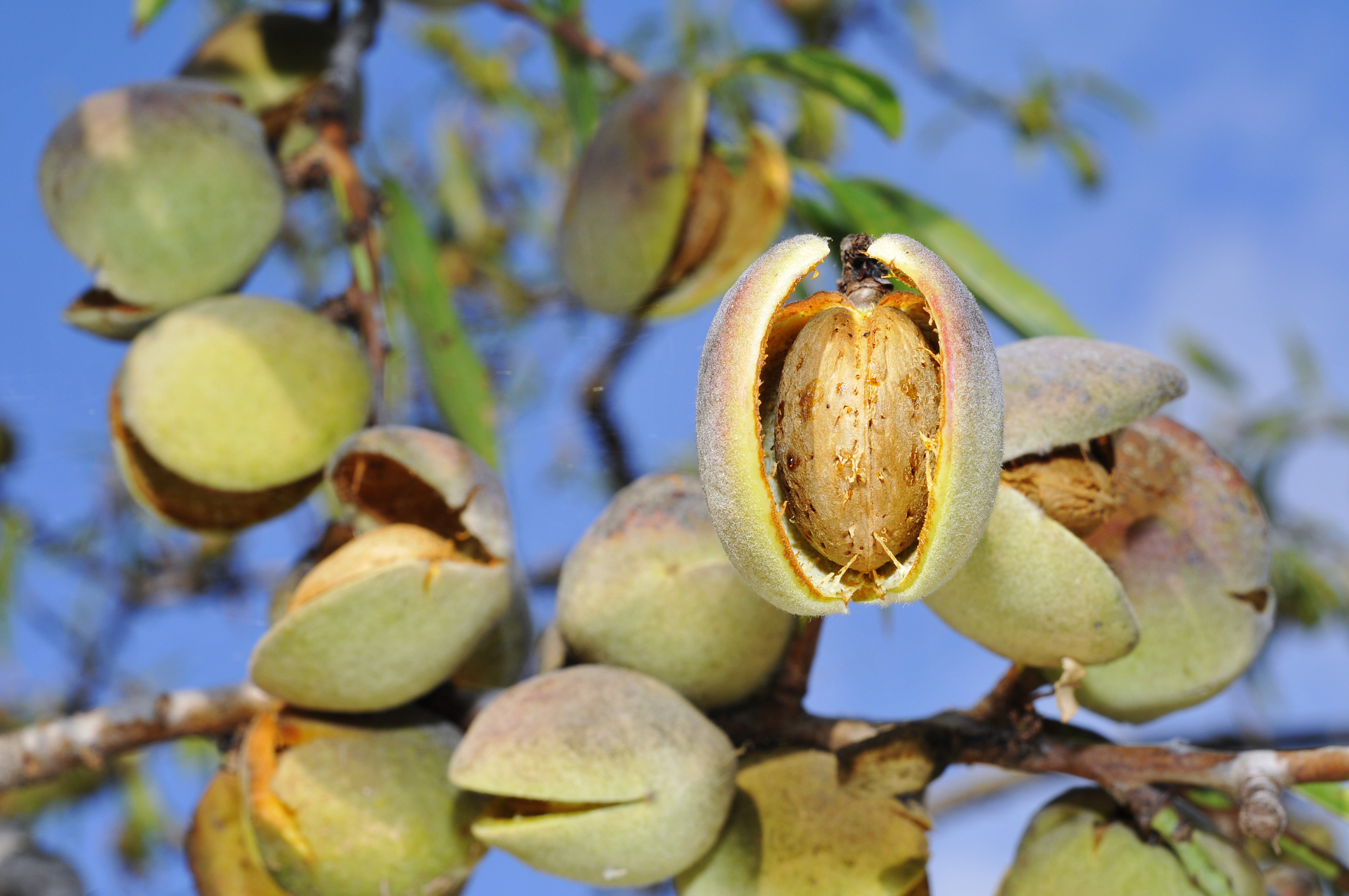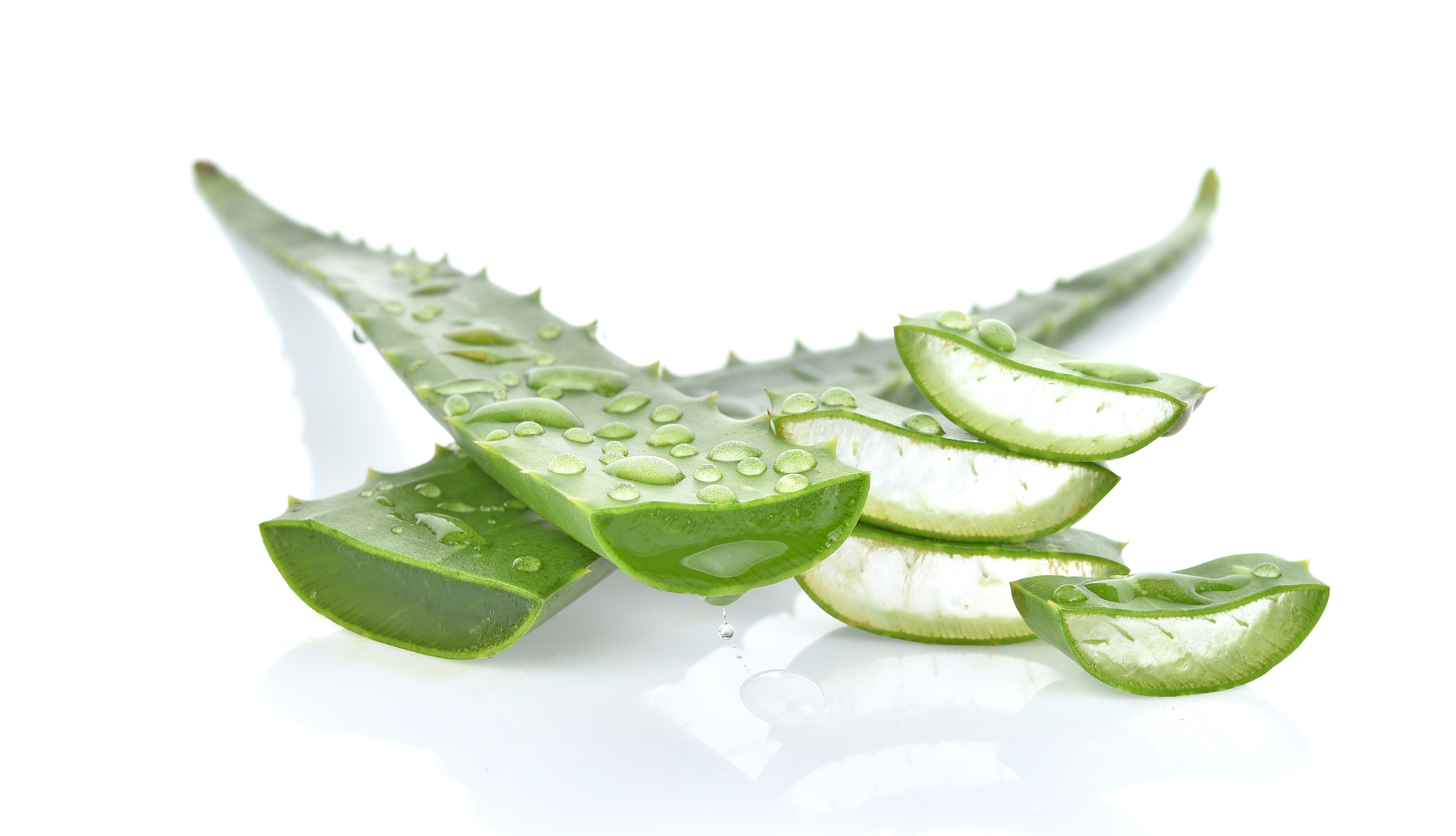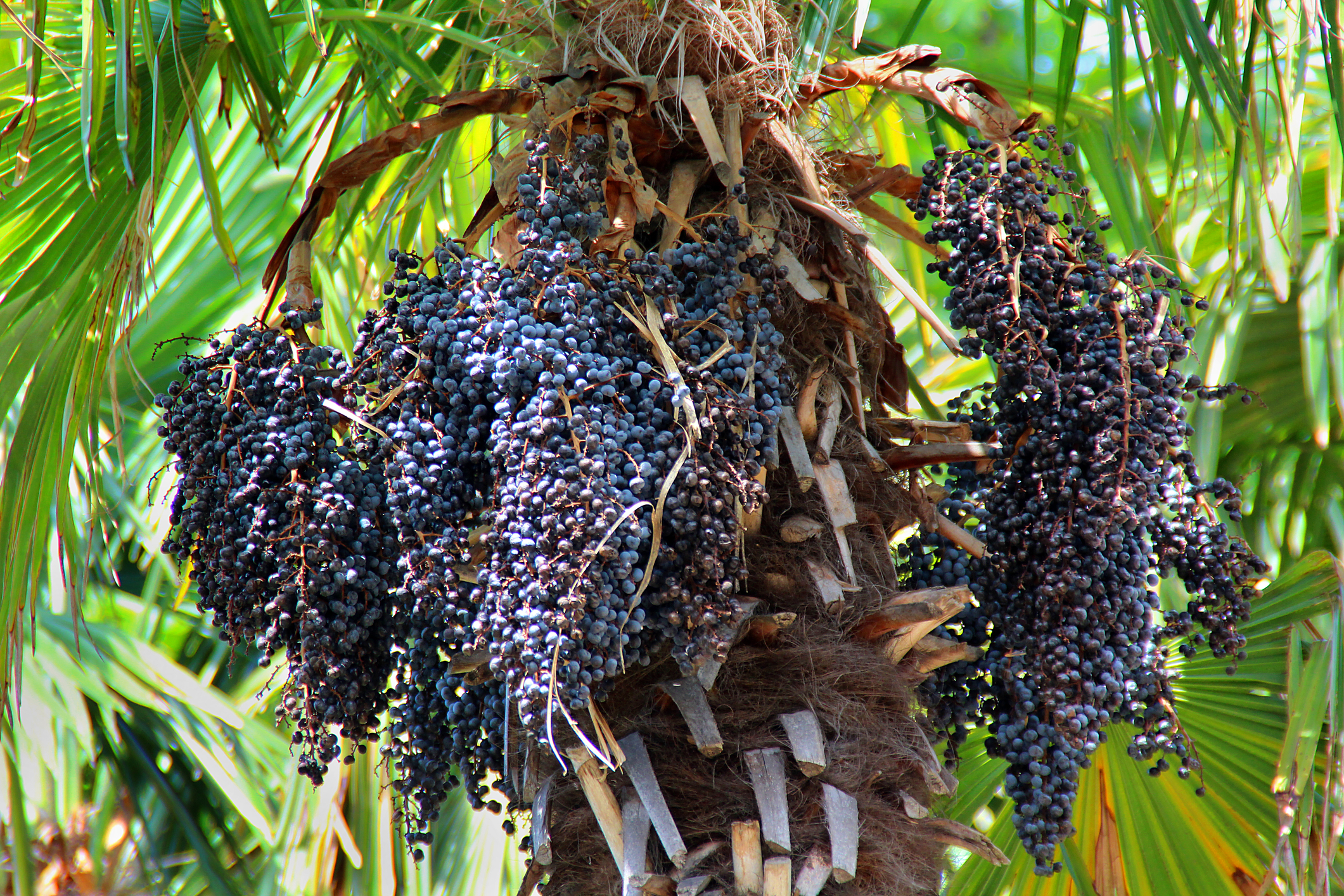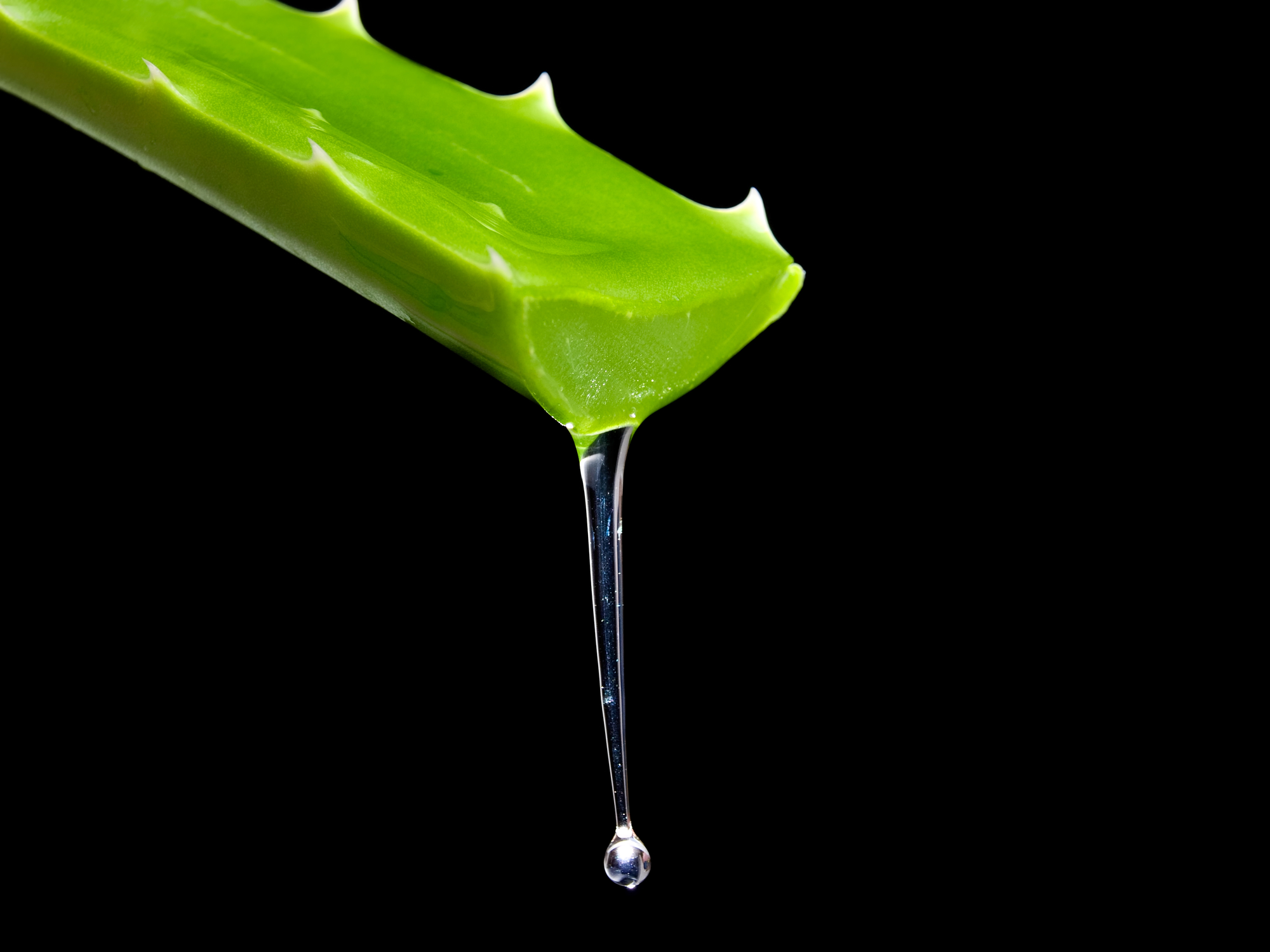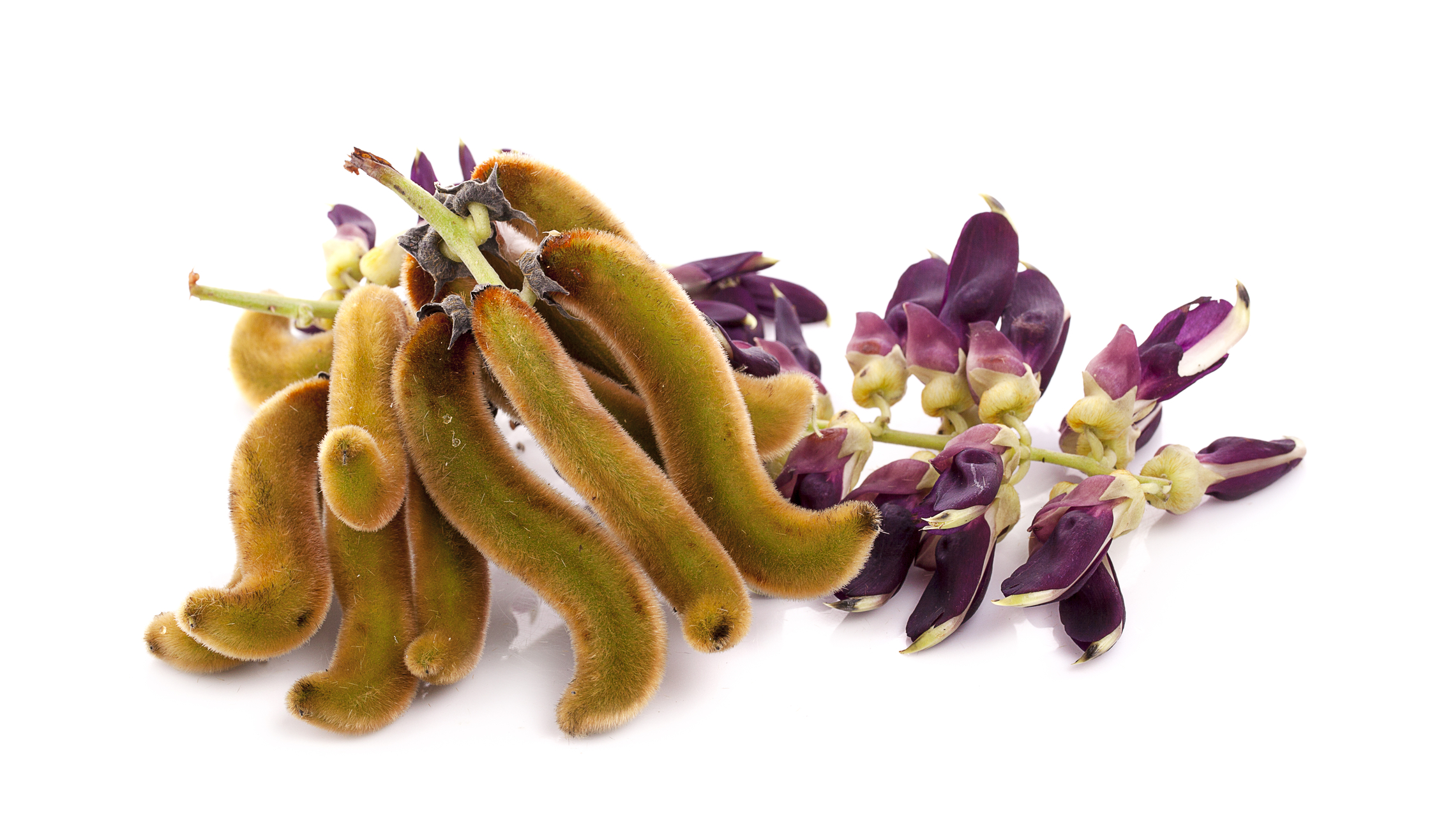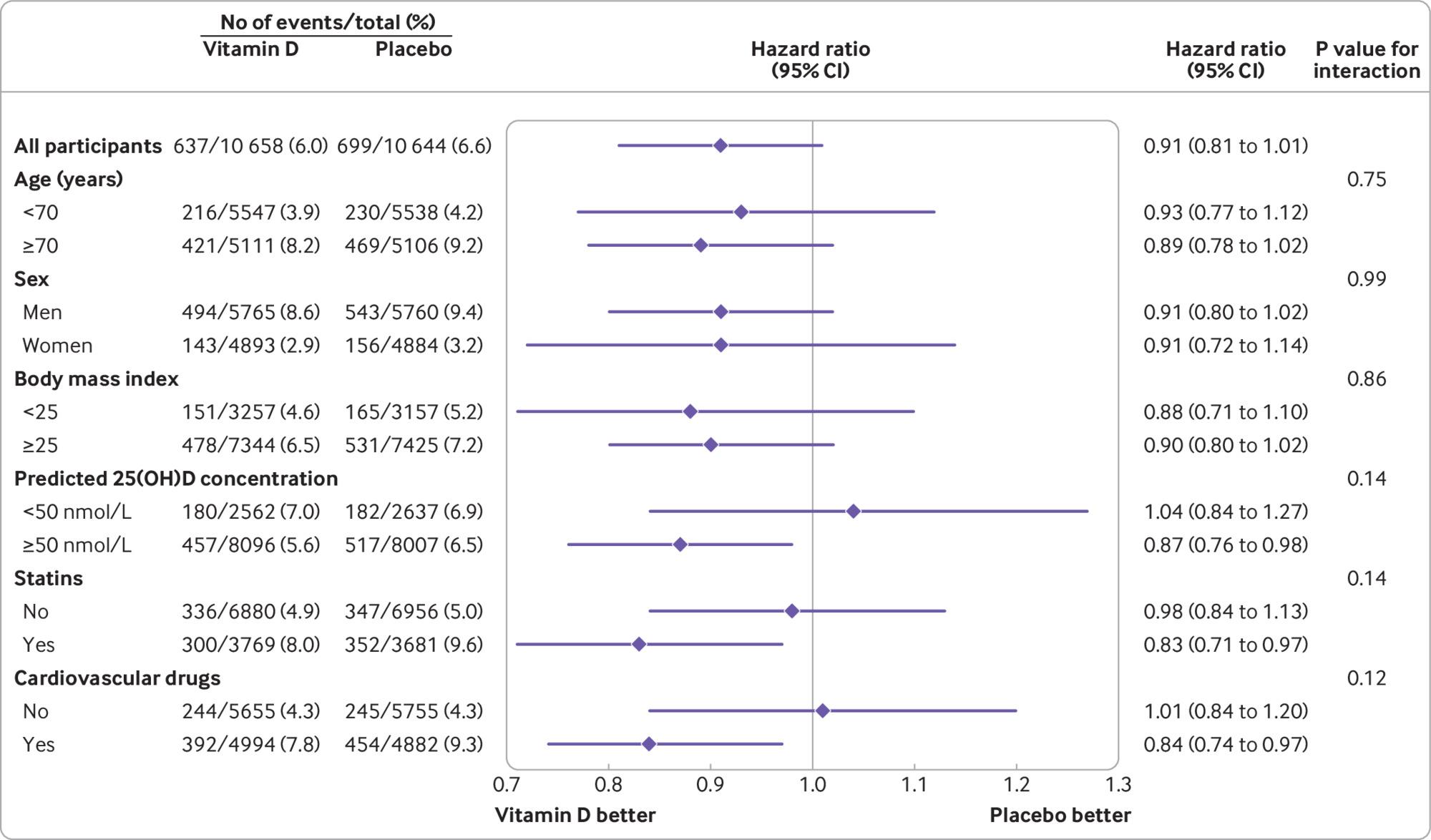
Vitamin D supplementation and major cardiovascular events: D-Health randomised controlled trial
Vitamin D supplementation and major cardiovascular events: D-Health randomised controlled trial
Abstract
Objective To investigate whether supplementing older adults with monthly doses of vitamin D alters the incidence of major cardiovascular events.
Design Randomised, double blind, placebo controlled trial of monthly vitamin D (the D-Health Trial). Computer generated permuted block randomisation was used to allocate treatments.
Setting Australia from 2014 to 2020.
Participants 21 315 participants aged 60-84 years at enrolment. Exclusion criteria were self-reported hypercalcaemia, hyperparathyroidism, kidney stones, osteomalacia, sarcoidosis, taking >500 IU/day supplemental vitamin D, or unable to give consent because of language or cognitive impairment.
Intervention 60 000 IU/month vitamin D3 (n=10 662) or placebo (n=10 653) taken orally for up to five years. 16 882 participants completed the intervention period: placebo 8270 (77.6%); vitamin D 8552 (80.2%).
Main outcome measures The main outcome for this analysis was the occurrence of a major cardiovascular event, including myocardial infarction, stroke, and coronary revascularisation, determined through linkage with administrative datasets. Each event was analysed separately as secondary outcomes. Flexible parametric survival models were used to estimate hazard ratios and 95% confidence intervals.
Results 21 302 people were included in the analysis. The median intervention period was five years. 1336 participants experienced a major cardiovascular event (placebo 699 (6.6%); vitamin D 637 (6.0%)). The rate of major cardiovascular events was lower in the vitamin D group than in the placebo group (hazard ratio 0.91, 95% confidence interval 0.81 to 1.01), especially among those who were taking cardiovascular drugs at baseline (0.84, 0.74 to 0.97; P for interaction=0.12), although the P value for interaction was not significant (<0.05). Overall, the difference in standardised cause specific cumulative incidence at five years was −5.8 events per 1000 participants (95% confidence interval −12.2 to 0.5 per 1000 participants), resulting in a number needed to treat to avoid one major cardiovascular event of 172. The rate of myocardial infarction (hazard ratio 0.81, 95% confidence interval 0.67 to 0.98) and coronary revascularisation (0.89, 0.78 to 1.01) was lower in the vitamin D group, but there was no difference in the rate of stroke (0.99, 0.80 to 1.23).
Conclusions Vitamin D supplementation might reduce the incidence of major cardiovascular events, although the absolute risk difference was small and the confidence interval was consistent with a null finding. These findings could prompt further evaluation of the role of vitamin D supplementation, particularly in people taking drugs for prevention or treatment of cardiovascular disease.
Trial registration ACTRN12613000743763
Vitamin D supplementation and major cardiovascular events: D-Health randomised controlled trial doi:10.1136/bmj-2023-075230

